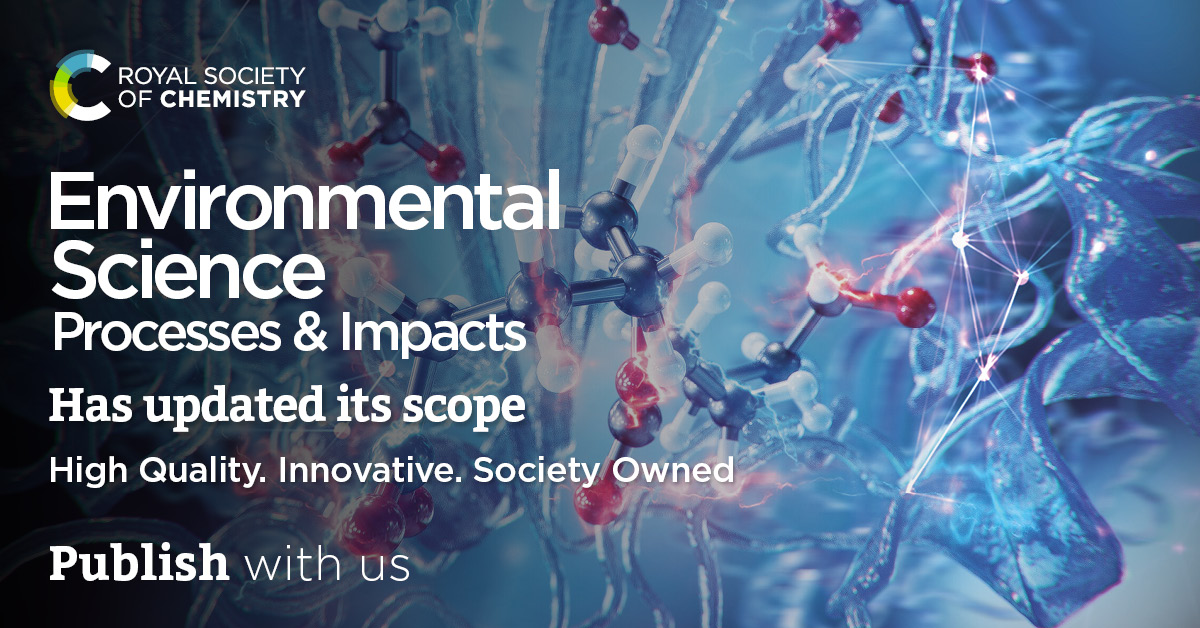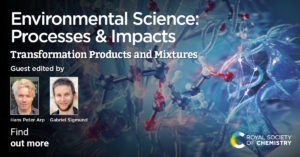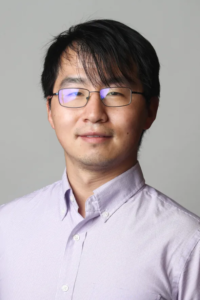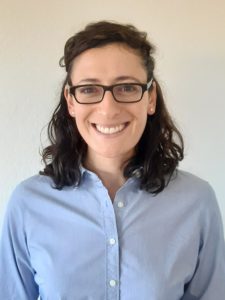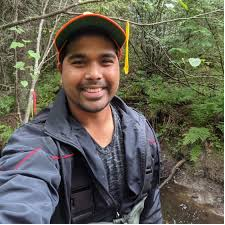Environmental Science: Processes & Impacts (ESPI) is the home for high-impact research in all areas of the environmental chemical sciences, including chemistry of the air, water, soil and sediment. We welcome studies on the environmental fate and effects of anthropogenic and naturally occurring contaminants, both chemical and microbiological, as well as related natural element cycling processes. Here, we’ve brought together our latest Article Collections and Themed Issues to enable you to easily navigate to content most relevant to you. We hope that you enjoy reading the papers in these collections.
Ongoing collections
Themed issues and collections
Tracking complex mixtures of chemicals in Human- and Eco-Exposome 2023
Guest Edited by Mingliang Fang (Fudan University), Beate Escher (Helmholtz Centre for Environmental Research), Li Li (University of Nevada, Reno), and Zhenyu Tian (Northeastern University)
Indoor Air Quality 2023
A collection including ESPI and Environmental Science: Atmospheres articles, in collaboration with the Royal Society of Chemistry’s Policy and Evidence team
Chemistry of Atmospheric Pollutants 2023
Guest Edited by Amila De Silva (Environment and Climate Change Canada), Max McGillen (CNRS-ICARE), Jason Surratt (University of North Carolina) and Cora Young (York University)
Biogeochemistry of the Trace Elements 2022
Guest Edited by Lenny Winkel (Swiss Federal Institute of Aquatic Science and Technology) and Elsie Sunderland (Harvard University)
POPs and Chemicals of Emerging Arctic Concern: Influence of Climate Change 2022
Guest Edited by Derek Muir (Environment & Climate Change Canada), Cynthia de Wit (Stockholm University), Katrin Vorkamp (Aarhus University) and Simon Wilson (Stockholm University)
Cryosphere Chemistry 2020
Guest Edited by Rose Cory and Kerri Pratt (University of Michigan)
Halogenated (semi)volatile organic compounds (“X(S)VOCs”) 2020
Guest Edited by Elizabeth Edwards (University of Toronto), Lucy Carpenter (University of York), Sarah Blossom (University Arkansas Medical Science) and Paul Tratnyek (Oregon Health & Science University)
PFAS 2019
Guest Edited by Lutz Ahrens (Swedish University of Agricultural Sciences), Jonathan Benskin (Stockholm University, Sweden), Ian Cousins (Stockholm University, Sweden), Michelle Crimi (Clarkson University, USA) and Chris Higgins (Colorado School of Mines, USA)
Indoor Air : Sources, Chemistry and Health Effects 2019
Guest Edited by Delphine Farmer (Colorado State University, USA) and Marina Vance (University of Colorado at Boulder, USA)
The environmental geochemistry and biology of hydraulic fracturing 2019
Guest Edited by Desirée Plata (MIT), Rob Jackson (Stanford University), Paula Mouser (University of New Hampshire) and Avner Vengosh (Duke University)
Atmospheric Surfaces 2018
Edited by Marianne Glasius (Aarhus University, Denmark) and Guest Editors Merete Bilde (Aarhus University, Denmark) Neil Donahue (Carnegie Mellon University, USA), Miriam Freedman (Pennsylvania State University, USA)
Mercury Biogeochemistry, Exposure, and Impacts 2018
Edited by former ESPI Associate Editor Helen Hsu-Kim (Duke University) and Guest Editors Chris Eckley (EPA) and Noelle Selin (MIT)
Bioanalytical tools for water and sediment quality assessment 2017
Edited by former ESPI Associate Editor Edward Kolodziej and Guest Editors Bryan Brooks (Baylor University, USA), Kyungho Choi (Seoul National University, Korea) and Ruth Marfil-Vega (American Water, USA)
QSARs and computational chemistry methods in environmental chemical sciences 2017
Guest Edited by Paul Tratnyek (OHSU) and Kathrin Fenner (Eawag)
Editor’s choice collections
Aquatic Photochemistry
Collated by ESPI Editor-in-Chief, Kris McNeill
Planetary Health
Collated by ESPI Associate Editor, Paul Tratnyek
Underappreciated Science
Collated by former ESPI Associate Editor, Ed Kolodziej














